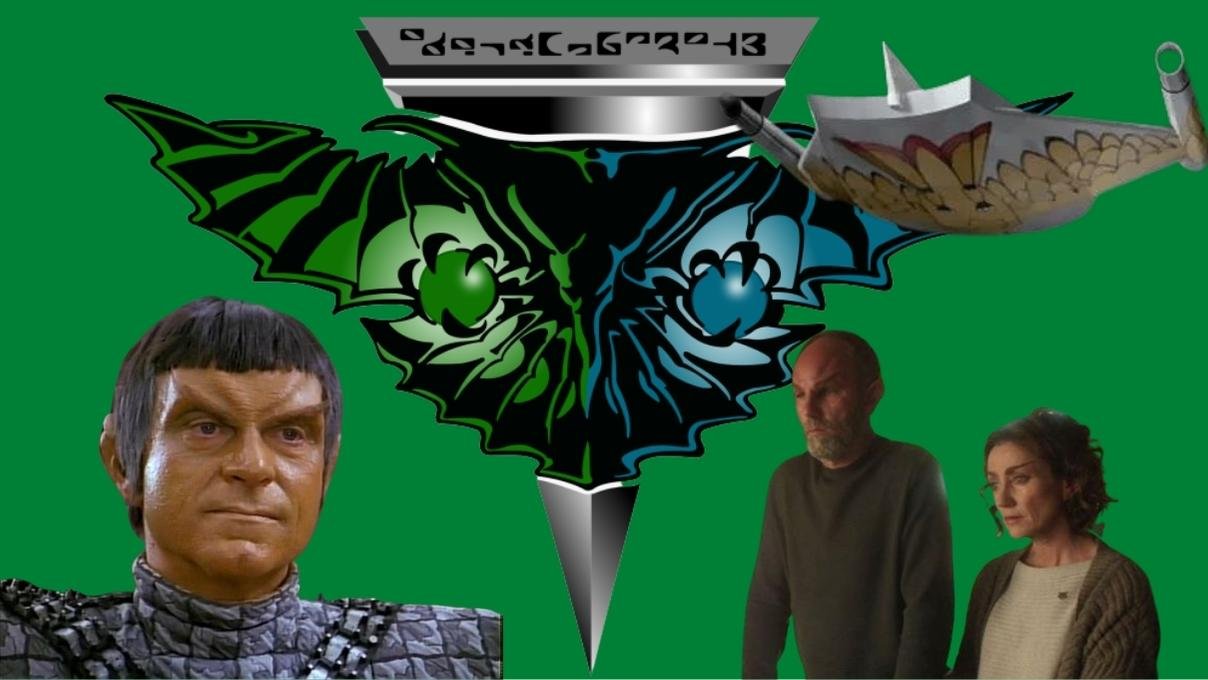T's Trek Trivia Tuesday: "Women's (Future) History"

MARCH 8, 2022 - They are mothers, daughters, sisters, Starfleet officers, fighters, artists. The Star Trek franchise has a history of showing strong women, capable of being an important crew member, even back in the 1960s, when it was unfashionable.
In 1978, the government of Santa Rosa, California designated the week of March 8 as “Women’s History Week.” The following year, other local governments across the United States latched onto the idea. In 1980, American President Jimmy Carter signed a proclamation declaring the week of March 8 National Women’s History Week." In 1987, Congress expanded the idea, declaring March to be Women’s History Month.
In recognition of the celebration, let’s take a look at some of the women of Trek, real and fictional, who have contributed to the success of the franchise.
DC Fontana passed away in 2019, and her loss was keenly felt by Star Trek fans. If Gene Roddenberry was the father of the franchise, Fontana was the godmother. Writing science fiction in a time when women were thought incapable of doing such things, Dorothy Catherine Fontana had to use her initials on her scripts, so nobody would know she wasn’t a man.
At the age of 27, Fontana was made Star Trek: The Original Series’ Story Editor after successfully writing and rewriting scripts throughout the show’s first season. She was the youngest person to achieve that position in Hollywood at the time, and one of only a handful of women who held staff writing positions.
She left TOS in season 3 to pursue other freelance writing but wrote two more episodes that year. When The Animated Series began to be developed, she returned to the franchise as Associate Producer and Story Editor, penning the fan-favorite episode “Yesteryear.” That episode, along with TOS’ “Journey To Babel,” helped to cement the character of Spock and flesh out his back story.
Fontana went on to work, briefly, on Star Trek: The Next Generation, but quickly left due to Gene Roddenberry’s notorious lawyer, Leonard Maixlish’s meddling. But that wasn’t the end of her Trek.
What was DC Fontana’s final Star Trek episode?
Fontana returned to Trek to write a Star Trek: Deep Space Nine season one episode, “Dax.” That was her final canonical contribution to the franchise but went on to write stories for the video games Star Trek: Bridge Commander, Star Trek: Legacy, and Star Trek: Tactical Assault. The final Trek script she wrote was the episode “To Serve All My Days” for the highly-acclaimed fan series, Star Trek: New Voyages.
As a character, TNG’s Counselor Deanna Troi presented something of a problem. Having a psychiatrist on the Bridge of the Enterprise was a concept born of the 1980s, which saw the rise of interest in mental health which continued into the 1990s, which the National Institute of Mental Health christened “The Decade of the Brain.” Giving that psychiatrist empathic powers seemed like a no-brainer.
That fact notwithstanding, the writers found Troi difficult to write for. Her powers were often inconveniently strong, leading to episodes where the crew encountered alien species who were immune to them, and even episodes in which she diidn’t appear at all. The “Troi” episodes of the series would often feature her in some sort of mental distress, having her get mind-raped on more than one occasion, as if that was the only aspect of her character they could write about.
In the sixth season of TNG, Counselor Troi decided that she wanted to officially become a Bridge Officer and took the test that would allow her to be added to the command shift rotation. It wasn’t easy, though, and she had to retake the test several times.
What lesson did Troi have to learn to pass the test?
In the holographic final exam of the Bridge Officer Test, the antimatter storage pod in Engineering is breaking down. Despite multiple attempts, Troi is unable to stop the warp core breach that follows. Then she realizes what she needs to do. In her final, successful try, she sends Geordi to make the repairs from inside a crawlway. The radiation in the crawlway will prove fatal to the Engineer, but Troi passes the test, learning that sometimes a commander must send their crew to their deaths. Apparently sometimes empathy can be a stumbling block to success.
Jeri Taylor joined TNG in its fourth season as a Supervising Producer. In the seventh season, with Rick Berman and Michael Piller focused primarily on DS9, she took over as Producer/Showrunner. She wrote a number of episodes for both TNG and DS9 even receiving writing credit for Wesley Crusher’s farewell episode, “Final Mission,” “The Wounded,” which introduced the Cardassians, and the two-part “Unification,” which brought Spock into TNG.
Taylor went on to co-create Star Trek: Voyager, the third spinoff of the franchise. She retired during VOY’s fourth season, in 1998, but her legacy remains.
Where can you go to see Jeri Taylor’s piece of Star Trek?
Between 1995 and 1998, Jeri Taylor donated a collection of her work to Indiana University’s Lilly Library, including outlines, scripts, technical notes, cast lists, shooting schedules, casting call sheets, and research notes. Her work is in good company. The Lilly also houses a Shakespeare First Folio, George Washington’s letter accepting the first presidency of the United States, Abraham Lincoln’s desk and several James Bond manuscripts, among other things.
Before being assigned to Deep Space 9 as Benjamin Sisko’s liaison officer, Kira Nerys was a rebel fighting against Cardassia for the freedom of Bajor. She grew up in a refugee camp, her mother was considered a collaborator of the Cardassians, and she had been a member of the Shakaar resistance cell, who sent her to DS9 on a mission to space station Terok Nor four years before it was renamed “Deep Space 9” by the Federation. The mission didn’t quite go according to plan.
What was her mission and what went wrong?
Kira had been sent to the station to retrieve a list of Bajoran collaborators. A chemist, Vaatrik, was the collaborators’ link to Gul Dukat, so one night, Kira broke into his shop on the Promenade. Unfortunately, Vaatrik showed up after hours and Kira had no choice but to kill him. This set events into motion that would have repercussions for many years. Dukat put Odo in charge of the investigation; Kira paid Quark to cover for her; and Vaatrik’s murderer was never found. That is, until the investigation was reopened the year after the Cardassian withdrawal from Bajor.
Hanelle M. Culpepper was the first woman and first African-American to direct a Trek pilot. After her success directing a couple of episodes of Discovery, she was asked to help bring Picard into being and directed the first three episodes.
Culpepper has been directing since 1993 and has been nominated for the NAACP Image Award twice now. But becoming a director isn’t easy.
Do you know what she considers to be her three big breaks?
In addition to being a director, Culpepper is a writer. When she moved to Los Angeles, she had a script, a period piece about two African-American women, that she had trouble selling. Until that is, she got a call from Bigfoot Films, looking to produce it. The film, Within, took four years to complete and sell and was her first big break.
Once it was acquired by Lifetime, they hired her to make three more movies. Big break #2.
Her third big break was thanks to NBC’s diversity directing program, she was granted the opportunity to shadow a director on the television show Parenthood, which led to her directing an episode.
We’re still getting to know Joann Owosekun, operations officer of the starship Discovery. The African native grew up near Ogbunike Caves. Since DISCO season one, we’ve seen her grow from a lieutenant junior grade to a lieutenant commander. She’s been awarded the Starfleet Medal of Honor for helping to end the Federation-Klingon War, she kicks some serious ass in the boxing ring, and she voluntarily traveled to the future with Discovery’s crew.
But it’s not her future we’re concerned with here, it’s her past. In the episode “New Eden,” Captain Christopher Pike and Commander Burnham took her on her first away mission.
What was the mission and why was she so suited for it?
The landing party was beaming down to a primitive village on the planet Terralysium, one that housed religious people who were not interested in technology. Owosekun had grown up in a Luddite community on Earth, that is to say, one that had turned its back on technology, as well. Burnham thought it would be a smart move to take the ops officer down to the planet. It’s a good thing they did, too, because when they were imprisoned, she was able to use a magnet to set them free. Maybe she watched a lot of MacGyver as a child, too.
T is the Managing Editor for Daily Star Trek News and a contributing writer for Sherlock Holmes Magazine and a Shakespeare nerd. He may have been the last professional Stage Manager to work with Leonard Nimoy, has worked Off-Broadway and regionally, and is the union Stage Manager for Legacy Theatre, where he is currently working with Julie Andrews. after which he’ll be working on Richard III at Elm Shakespeare Company.











